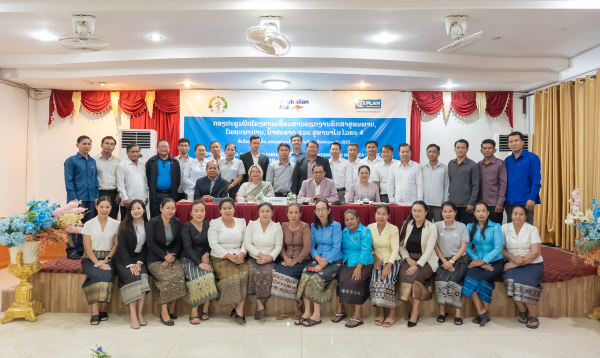KPL
A decade-long effort to improve public health, nutrition, and sanitation in remote parts of Laos has come to a successful close, leaving behind a legacy of healthier communities and strengthened local health systems. The initiative, which ran from 2014 to June 2025, was jointly implemented by Plan International Laos and the Ministry of Health, in partnership with Saravan and Oudomxay Provincial Health Departments and District Health Offices.

(KPL) A decade-long effort to improve public health, nutrition, and sanitation in remote parts of Laos has come to a successful close, leaving behind a legacy of healthier communities and strengthened local health systems. The initiative, which ran from 2014 to June 2025, was jointly implemented by Plan International Laos and the Ministry of Health, in partnership with Saravan and Oudomxay Provincial Health Departments and District Health Offices.
The project targeted four underserved districts—Saravan and Ta Oy in Saravan Province, and Houn and Pakbeng in Oudomxay Province—reaching 272 villages (302 communities) and working through 40 health centers. Official handover ceremonies marking the conclusion of the project were held recently, co-chaired by Dr. Akhom Lamvichith, Head of the Saravan Provincial Health Department, and Ms. Carol Mortensen, Country Director of Plan International Laos. The events were attended by senior government officials and representatives from Plan International.
At the heart of the initiative was a commitment to maternal and child health. Key goals included ensuring pregnant women received at least four antenatal care visits and that childbirths were assisted by skilled healthcare professionals. Community education on infant and young child feeding practices was another central focus, along with a strong push to reduce stunting among children under two years old.
“We prioritized reaching the most vulnerable communities with essential healthcare,” said Ms. Mortensen. “The improvements in maternal care and child nutrition will have long-lasting benefits for generations.”
The project also introduced Community-Led Total Sanitation Plus (CLTS+), alongside social behavior change communications and a Gender WASH Monitoring Tool, empowering local communities to eliminate open defecation and improve hygiene practices.
“Since latrines were built, life has become much more convenient,” said Nulai, a resident of one open-defecation-free village. “There are fewer cases of diarrhoea, and our village is much cleaner and healthier.”
To further strengthen healthcare access, the project launched the ‘Peuan Tae’ initiative, focused on upgrading health centers to be more hygienic, safe, and inclusive for mothers, children, and persons with disabilities.
“Our health centre now has everything we need—friendly staff, modern facilities, and a safe environment,” shared Khamkeo, a young mother from Houn District. “Seeking healthcare has become easier and more comfortable.”
Key Achievements (2014–2025):
40 new health centres and maternal/child health annexes constructed and equipped.
50 community water systems installed, improving local water access.
272 villages certified as open-defecation-free.
Community sanitation and water management committees established for sustainability.
Saravan and Oudomxay provinces officially declared open-defecation-free, contributing to national efforts to achieve Sustainable Development Goals 2 (Zero Hunger) and 6 (Clean Water and Sanitation)
The project was aligned with the National Nutrition Strategy Plan of Action 2016–2020, laying a strong foundation for continued improvement in Laos’ health and nutrition sectors. The initiative also benefited from the generous support of international partners, including Australian Aid, Plan Australia, BMZ, and Plan Germany.
As the project draws to a close, its impact continues. Rural communities in Saravan and Oudomxay are now better equipped with the knowledge, infrastructure, and resources to maintain healthier lifestyles and support future generations.
“This is not just an end—it’s a new beginning for resilient, empowered communities,” said Ms. Mortensen. “We are proud to have walked alongside them on this journey.”
KPL